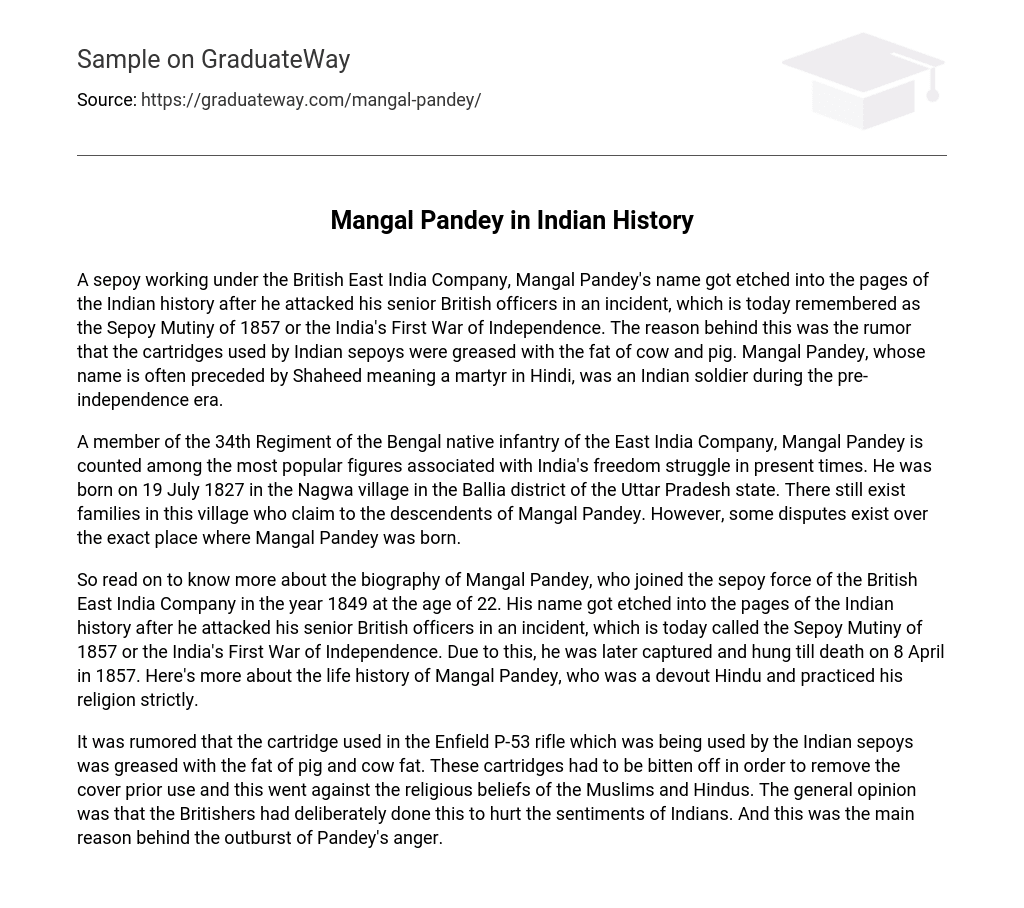Mangal Pandey, a sepoy employed by the British East India Company, became famous in Indian history for his assault on his superior British officers during what is referred to as either the Sepoy Mutiny of 1857 or India’s First War of Independence. This occurrence was sparked by rumors that the cartridges utilized by Indian sepoys were coated with fat from cows and pigs. Mangal Pandey, alternatively known as Shaheed in Hindi (which translates to martyr), had previously served as an Indian soldier prior to independence.
Mangal Pandey, a member of the 34th Regiment of the Bengal native infantry of the East India Company, is a renowned figure associated with India’s freedom movement. Born on July 19, 1827, in Nagwa village in the Ballia district of Uttar Pradesh, there are conflicting claims regarding his exact birthplace among families in this village who assert their descent from Mangal Pandey.
Delve into the biography of Mangal Pandey, a devout Hindu who remained faithful to his religious convictions. At 22 years old, he joined the sepoy force of the British East India Company in 1849. He gained notoriety in Indian history by attacking his superiors from Britain during the Sepoy Mutiny of 1857, also known as India’s First War of Independence. Consequently, on April 8, 1857, he was captured and executed.
Rumors circulated suggesting that the cartridge utilized in the Enfield P-53 rifle, which was employed by the Indian sepoys, was lubricated with pig and cow fat. These cartridges needed to be bitten off before use, which was contrary to the religious principles of Muslims and Hindus. It was widely believed that the British intentionally did this to offend the sentiments of Indians. Consequently, this became the primary cause of Pandey’s outburst of anger.





